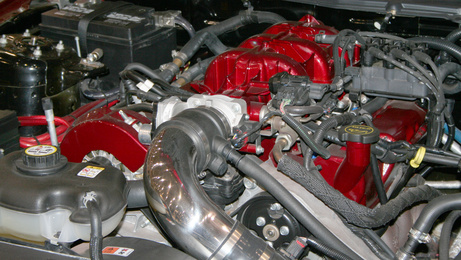
An engine consists of many interlocking parts that work together to produce the energy that keeps a car, truck or other vehicle running smoothly. Knowing how to identify the parts of an engine and understanding how they work together to create energy will help drivers keep their vehicle in good shape longer. It will also help them at the repair shop and enable them to ask the mechanic informed questions about work that may need to be done.
See that the pistons are cylindrical pieces of metal that pump gasoline or another energy source into the engine. A piston is attached to a connecting rod and placed inside cylindrical holes within the engine. They move up and down and turn a corkscrew-shaped device called a crankshaft, which is located beneath the cylinders on an in-line engine (one that has banks rather than rows of cylinders) and at the bottom of the “V” in a V-shaped engine.
Recognize the cylinder block, the engine’s largest component. It’s usually made of aluminum or iron and has core plugs that seal holes left after the manufacturing process. It’s located at the bottom of the engine and serves as a “shell” to hold and connect the other parts of the engine. The cylinder block’s shape varies according to the car company, model, and how many cylinders, or piston holes, the block contains. The more cylinders, the more powerful the engine.
Identify the spark plug as a small electrical device that screws into the cylinder head. Spark plugs consist of an electrode which is connected to an ignition coil by a wire. In an internal combustion engine, this plug ignites gasoline or another fuel with an electric shock to turn on the engine when the driver starts the ignition switch.
Notice the exhaust manifold. It is made of stainless steel or cast iron, and gathers gases that escape the cylinder head. An exhaust valve helps release the gases from the manifold. These gases, in turn, leave the car through the exhaust pipe at the back of the vehicle.
Notice the oil sump, sometimes called an oil pan. This collects oil that lubricates the engine and stores it in a pan at the very bottom of an engine. Made of steel or aluminum, it may resemble a sturdier version of a kitchen roasting pan.